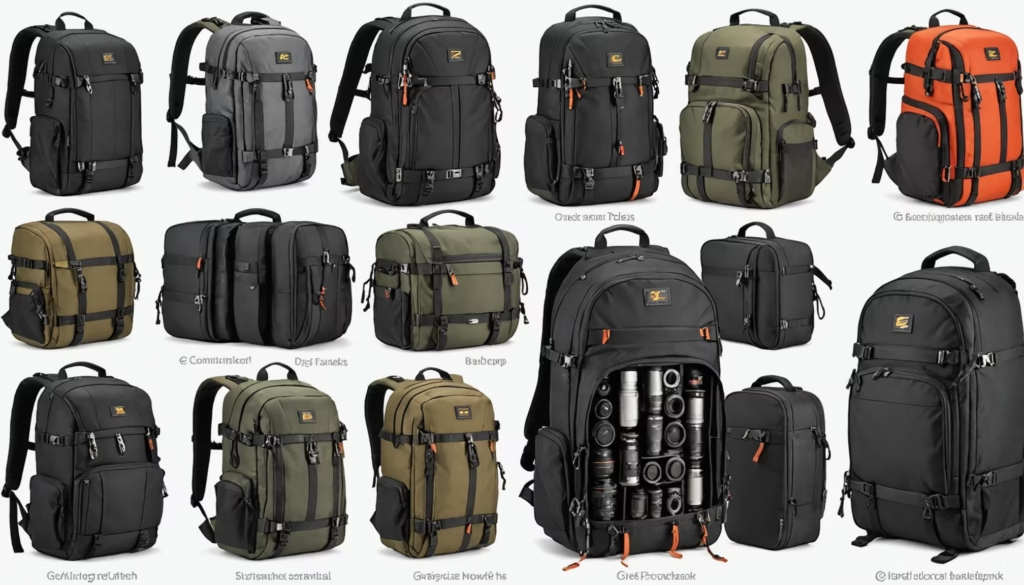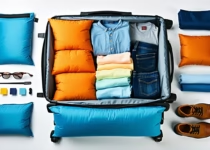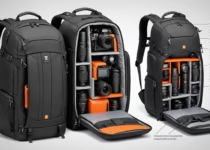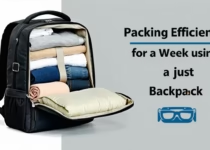The Best Zipper And Lock Options For Camera Backpacks

You’ve got your camera gear packed, your backpack ready, and your trip just around the corner. Choosing the best zipper and lock options for camera backpacks is key to keeping lenses, bodies, and accessories safe. In this guide, you’ll learn which zipper styles hold up under stress, how lock mechanisms stack up, and what weatherproof and TSA-friendly features to look for. By the end, you’ll know exactly which combo fits your shooting style and travel needs.
Understand zipper types
Zippers do more than open and close your bag. They protect sensitive gear from dust, moisture, and snags. Here are the most common zipper styles you’ll encounter:
- Coil zippers
- Made of nylon spirals, they flex easily around curves.
- Lightweight, ideal for daypacks and mirrorless kits.
- Molded plastic zippers
- Features interlocking teeth stamped from plastic.
- Durable under heavy use, great for pro-level DSLRs.
- Metal zippers
- Usually brass or aluminum, they offer a premium feel.
- Tend to be heavier and can corrode if not sealed.
- Waterproof zippers (PU-coated)
- It has a rubberized coating that sheds rain.
- Pair well with tips for using camera backpacks in rainy weather.
Which zipper should you pick? If you shoot outdoors, lean into waterproof or molded options. On urban shoots, a smooth-running coil zipper can speed up lens swaps. Always check slider quality—metal pullers with cord loops last longer than thin tabs.
Compare lock mechanisms
Locking your zippers adds a layer of anti-theft protection—especially in busy airports and markets. Here’s a quick look at popular lock types:
| Lock type | Pros | Cons | TSA friendly |
|---|---|---|---|
| Combination lock | No key to lose, quick to reset | Can be cracked if the numbers are predictable | Some models |
| Keyed lock | Solid security feel, harder to pick | You need to carry a key | Rarely |
| Cable lock | Flexible cable wraps around zippers or gear loops | Bulky, extra weight | Varies |
| Integrated latch | Built into bag frame, stealthy profile | Limited to specific backpacks | Often yes |
Combination locks pair well with molded-plastic zippers that have dual sliders. For maximum deterrence, look for mini-cable locks that thread through metal eyelets on your pack. If you travel to the US, pick a lock stamped “TSA accepted” so agents can re-lock your bag after inspection. For more on luggage rules, see how to choose a camera backpack for air travel rules.
Choose weatherproof options
Here’s the thing—rain and humidity can ruin thousands of dollars in gear before you even set up your tripod. Zippers and locks that seal out moisture are a must if you:
- Shoot in tropical climates
- Hike into misty forests
- Work near bodies of water
Look for backpacks with PU-coated or thermoplastic-sealed zippers. They create a continuous barrier that droplets can’t penetrate. Some designs ditch metal teeth altogether, opting for a welded seam that you zip over. Also inspect lock housing—rubber gaskets around lock faces prevent tiny leaks.
To reduce condensation buildup inside your bag, combine weatherproof zippers with good internal airflow. You might also want to review how to keep moisture out of camera gear while traveling for extra tips.
Pick TSA-approved locks
If your kit often passes through airport security, you need locks that agents can open without cutting them off. TSA-approved locks carry a Travel Sentry or Safe Skies logo. Here’s how to spot the right one:
- Look for Travel Sentry logos on packaging or lock body.
- Verify the lock type—combination or keyed.
- Match lock size to your pack’s zipper pull tab diameter.
Some high-end camera backpacks include built-in latch locks you slide over zipper pulls. Others offer small padlocks you thread through metal loops. Both styles work, as long as they’re certified. Remember, a stamped TSA lock lets your gear stay secure and accessible to inspectors.
Maintain zippers and locks
Even the toughest zippers and locks need a little TLC. A neglected slider or jammed combination can strand you far from home. Here’s your maintenance checklist:
- Clean teeth regularly
- Use a soft brush or compressed air to clear grit.
- Lubricate sliders
- Rub a wax pencil (paraffin) or zipper lubricant along teeth.
- Exercise combinations
- Rotate through codes monthly so mechanisms stay smooth.
- Check lock cables
- Bend and flex to spot frays or rust.
If a zipper pulls off track, don’t yank it. Gently work the slider up to disengage both sides, then realign teeth before zipping back. For more general backpack care—especially when you carry electronics—see how to prevent condensation inside camera backpacks.
Frequently asked questions
What zipper size is best for camera backpacks?
Zipper size numbers refer to tooth width. For heavy kits, choose #8 or #10 molded zippers. Lighter mirrorless setups do fine with #5 coil zippers.
Are waterproof zippers completely leakproof?
They resist rain and splashes, but they’re not scuba-grade. Combine them with weather covers for deep wet conditions.
How do I reset a combination lock?
Most TSA-approved combo locks reset by pressing a small button or sliding the shackle down. Check the lock’s user guide for exact steps.
Can cable locks fit through all zipper pulls?
Only if your pack has metal eyelets or large pull rings. Some backpacks include dedicated lock points for this purpose.
Should I prefer keyed or combination locks?
Combination locks keep you key-free but risk forgotten codes. Keyed locks offer peace of mind—just don’t lose that tiny key.
How often should I service my zippers?
Aim for monthly cleaning and lubrication if you shoot outdoors routinely. In dusty or sandy environments, do it after every major outing.
Can I replace a broken zipper slider myself?
Yes, many sliders are removable. You’ll need pliers, a replacement slider, and basic patience. Tutorials online can walk you through the swap.
Final thoughts and tips
Picking the right zipper and lock combo comes down to your shooting style and travel routine. If you bounce between flights and sidewalks, a reliable molded zipper plus a TSA-approved combo lock is a solid bet. For wet environments, invest in fully sealed zippers and gasketed lock housings. And don’t forget maintenance—keep sliders and lock mechanisms running smoothly so your gear stays safe wherever you roam.
Now that you know the best zipper and lock options for camera backpacks, go ahead and upgrade your pack. You’ll travel lighter, shoot faster, and leave worry behind.


